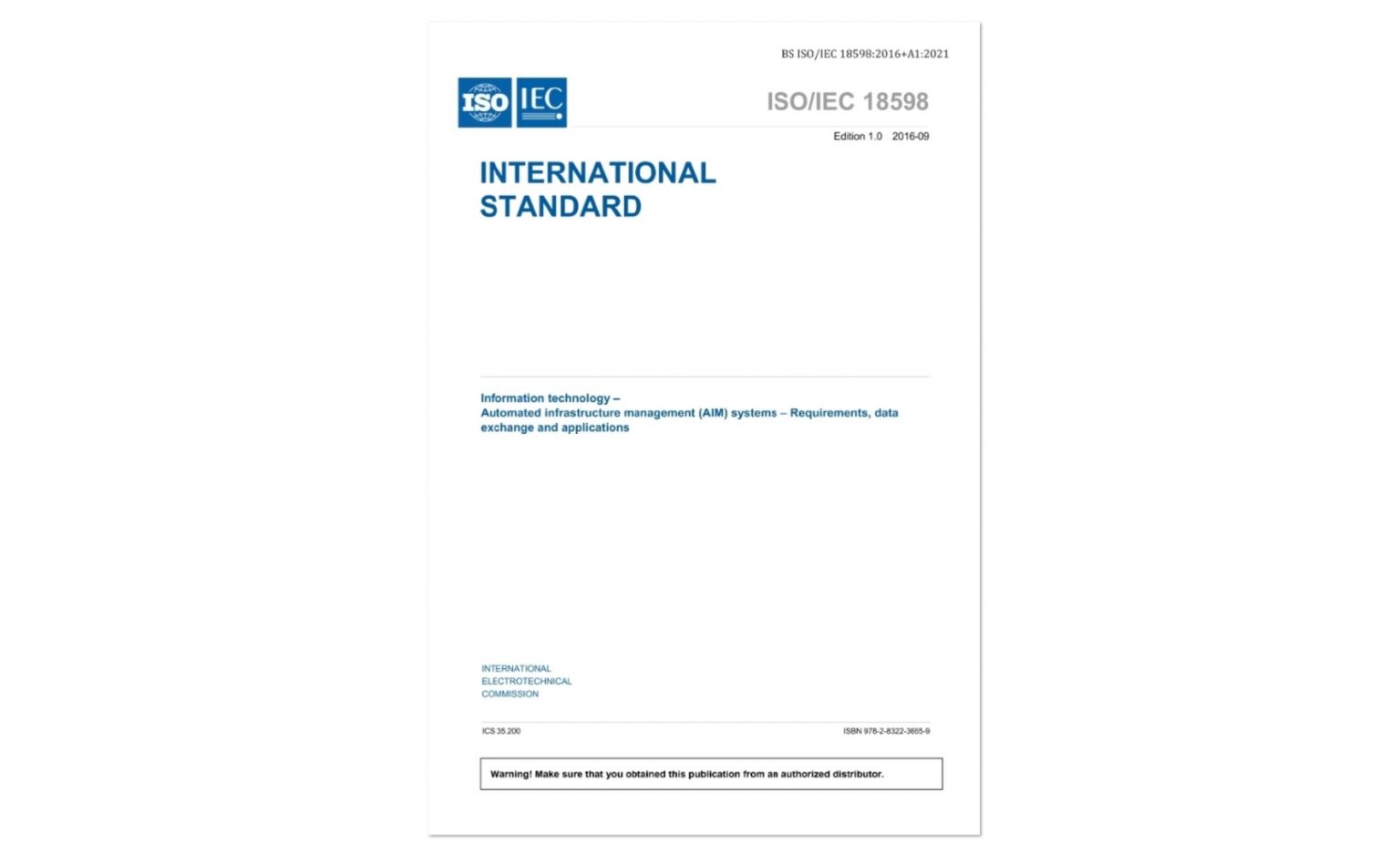ISO_IEC_18598-2016 AIM Systems
ISO_IEC_18598-2016 International Standard Interpretation of Automated Infrastructure Management (AIM) Systems

The ISO/IEC 18598 international standard is established for the automated management of information infrastructure. It is developed by the ISO (International Organization for Standardization) and IEC (International Electrotechnical Commission) Joint Technical Committee 1 – Subcommittee 25 of Information Technology – Information Technology Equipment Interconnection Group. These standards delineate the functional requirements, recommendations, data exchange formats, and application values of automated infrastructure management systems.
What is AIM?
AIM is the abbreviation of English Automated Infrastructure Management systems, and the Chinese meaning is automated infrastructure management system.
Who is the AIM standard applicable to?
The AIM (Automated Infrastructure Management) standard is applicable to organizations and entities involved in the management of information infrastructure. This includes, but is not limited to, businesses, data centers, telecommunications companies, and IT service providers. Essentially, any entity responsible for the planning, implementation, and maintenance of information technology infrastructure can benefit from adhering to the AIM standard.
The AIM (Automated Infrastructure Management) standard is applicable to a range of stakeholders, including:
- Property owners and infrastructure managers
- AIM solution providers
- Network infrastructure planners and network operations managers
- Data center operations managers
IT process managers - Management system software suppliers and software integrators
What is the composition of the AIM system?
The AIM system comprises both hardware and software components designed to automate the detection of jumper insertion and removal.
1. Hardware: The hardware primarily facilitates the detection of jumper plugging and unplugging. Various technologies are employed for jumper detection:
- Infrared (e.g., CommScope’s imVision series)
- CPID (e.g., TE’s Quareo series products)
- Tact switch (e.g., SURTEC)
- RFID (no mature product found yet)
- Nine-core/ten-core jumper (e.g., RIT)
- Barcode/QR code (e.g., RouteMaster)
2. Software: The software is responsible for collecting and storing jumper connection change information. It also links jumper connection information with link information and integrates information from other sources. This allows authorized users or other systems to access wiring system information. Major global software product suppliers include:
- CommScope imVision
- Sunbird
- Datwyler DatAIM
- FNT
- Pathfinder
- PATCH MANAGER
- RouteMaster
AIM system requirements
- Automatically detect connections between patch panel ports.
- Automatically detect connections between patch panel ports and other equipment, and record or infer these connections.
- Monitor jumper connections and disconnections.
AIM functional requirements
1 – Record and Maintain Infrastructure Information:
- Document connections between cabling infrastructure equipment and patch panels.
- Automatically discover devices connected to the network.
Query attribute information records of equipment and distribution frames. - Automatically update records with changes.
- Manually record asset information for devices not discoverable.
- Track the physical location of devices.
- Discover or infer illegal connections.
- Maintain a change log.
- Document the physical layout of the computer room and workspace.
2 – Management and Use of Infrastructure Information:
- Set event alarm rules.
- Link diagram viewing and analysis.
Provide optimal path suggestions for link creation. - Create, assign, execute, track, and close work orders.
Maintain work order history. - Provide on-site access to work orders and maintenance equipment information.
- Automatically track work orders and verify the correctness and completion status of work order execution.
- Customize project-related reports as needed.
3 – Integrity of Infrastructure Information: Ensure that infrastructure information is not lost even if the AIM system fails and is restored.
Reflect the current real-time status information of the infrastructure.
Label Generation and Printing:
Automatically generate and print labels according to user-defined rules.
In summary, AIM systems offer a comprehensive solution for managing and optimizing IT infrastructure, providing organizations with increased efficiency, visibility, security, and cost savings. By leveraging automation and advanced technology, AIM systems empower organizations to meet the evolving demands of modern IT environments and drive business success.